I took the long way to work today. To tell the truth, I do this most days. Commuting by bicycle inspires me to ride out of my way — check how the sunrise is progressing across the Mississippi River, see how our nearby waterfall is faring, or simply stretch my legs a bit. My office lies almost due east from my home, but I often aim my bike north, south, or west before doubling back. I heart my daily bike commute.
Turns out I’m not alone.
A recent study found that people who bicycle to work are the happiest with their commutes — and have the highest sense of overall well-being. Call it road rave, instead of road rage.
Wanting to stretch my knowledge on this, I contacted study author Oliver Smith, PhD, who tells me, “Even when income, job satisfaction, and other relevant factors are accounted for, bicycling and walking to work still has a positive effect on commute well-being.”
“Even when income, job satisfaction, and other relevant factors are accounted for, bicycling and walking to work still has a positive effect on commute well-being.”
For his October 2013 Portland State University dissertation study (cleverly entitled “Peak of the Day or the Daily Grind”), Smith surveyed 828 commuters around Portland, Ore. He presented his preliminary findings to the U.S. Transportation Research Board to help them better understand transportation’s role in quality of life and to build support for new metrics in city planning.
His study was part of an attempt to get at what increases our subjective well-being, happiness, and overall life satisfaction. While other researchers have looked at health, income, job satisfaction, and residential considerations, Smith opted to focus on commuting. As he wrote in his report, “Although commuting to work is generally thought to be a negative experience, research shows that time spent commuting is sometimes valued, especially by those that walk or bike to work.”
His conclusion? “My study found that commute well-being has a positive effect on overall life satisfaction.”
Smith compared commutes that involve biking, walking, public bus transit, light rail, carpooling, and driving alone. (The only commuters he seems not to have studied are those who walk from their kitchen to their home office, steering a coffee cup.)

He discovered that bicyclists are the happiest commuters. In fact, we’re really happy — “statistically significantly happier,” Smith tells me, than public transit or car commuters. And that happiness stretches into our daily life as well. (Read more about Smith’s findings.)
“My study found that bike commuters are more satisfied with life than commuters that drive alone or commute by light rail,” Smith explains. “However, life satisfaction is influenced by many things and it’s not certain whether happier people are more likely to bike or whether biking to work increases life satisfaction.
“For both car and bus commuters, commute well-being decreases substantially as the level of traffic congestion increases, as expected. However, this is not the case for bike commuters, possibly because bicycle commuters can navigate congested streets, often through using bike lanes or separated paths, while avoiding much delay.”
And consider that his survey took place in Portland, which has more than its fair share of rain and other inclement weather. And there are also all those hills — not to mention, mountains — to pedal up. (And down, lucky folks!)
Smith says that the topic of bicycle commuting has not been widely studied in the United States, but his findings support the conclusions of pioneering studies done in Swedish and Dutch cities.
Now, Smith is putting what he learned to work. He’s a transportation planner with Oregon’s Washington County Land Use and Transportation division, where, among other projects, he co-manages the Neighborhood Bikeway Plan to develop bicycle boulevards.
So, naturally I wanted to know if Smith himself commuted by bike.
His answer was an emphatic affirmative: “I commute daily by both bike and light rail since my commute is 28 miles each way. The largest bike leg of the trip, the seven-mile evening bike ride from the train station to my home, is a wonderful part of the day. I clear my head, stretch my muscles, see many beautiful neighborhoods, and arrive home feeling happy. My family appreciates this last part.”
Like many bike commuters, Smith has tapped into the quiet, the solitude, the meditative quality of bicycling, which can scrub away the day’s stress. Or conversely, that bicycle commute can double as training for bike racing. Plus there’s the health and environmental benefits that hardly need mentioning.
With this in mind, it should come as little surprise that Smith himself was not surprised by the results of his study.
“The findings were intuitive to me as a daily bicyclist. Bicycling is enjoyable and lifts one’s spirits. It can provide feelings of control (that is lacking when driving in traffic or waiting for a bus) and other positive feelings (possibly triggered by endorphins). Biking and walking allow one to ‘clear the head’ and focus on the present. Regular bike commutes can improve or help people maintain good health, both physical and mental. All these items, including convenience and cost, factor into my decision to bike.”
Me, too.
In fact, after all this discussion about bicycling, I realize it’s time to saddle up for the ride home.
Can’t wait.
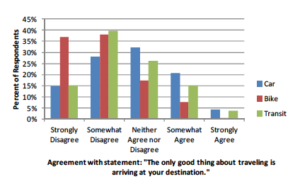
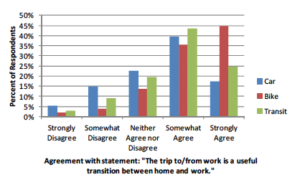
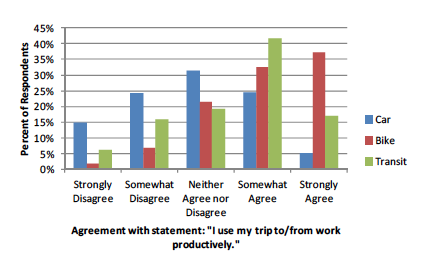
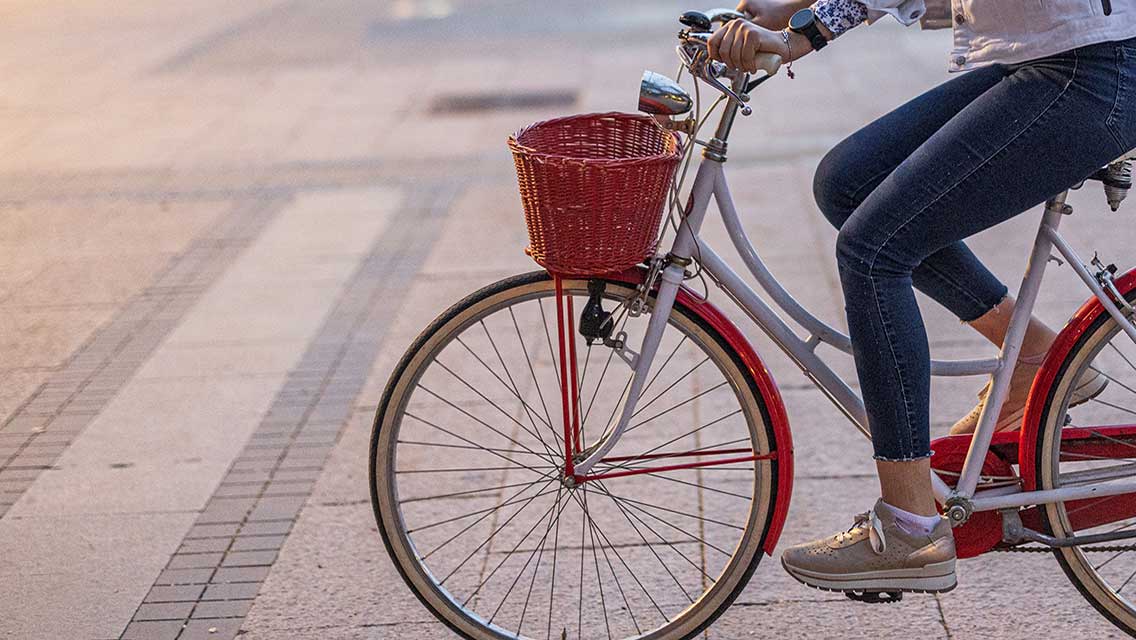
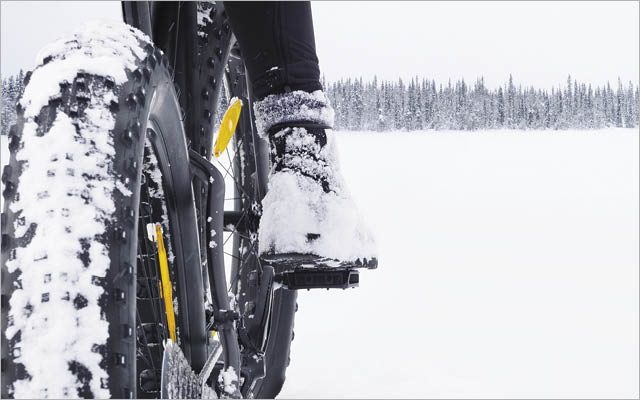
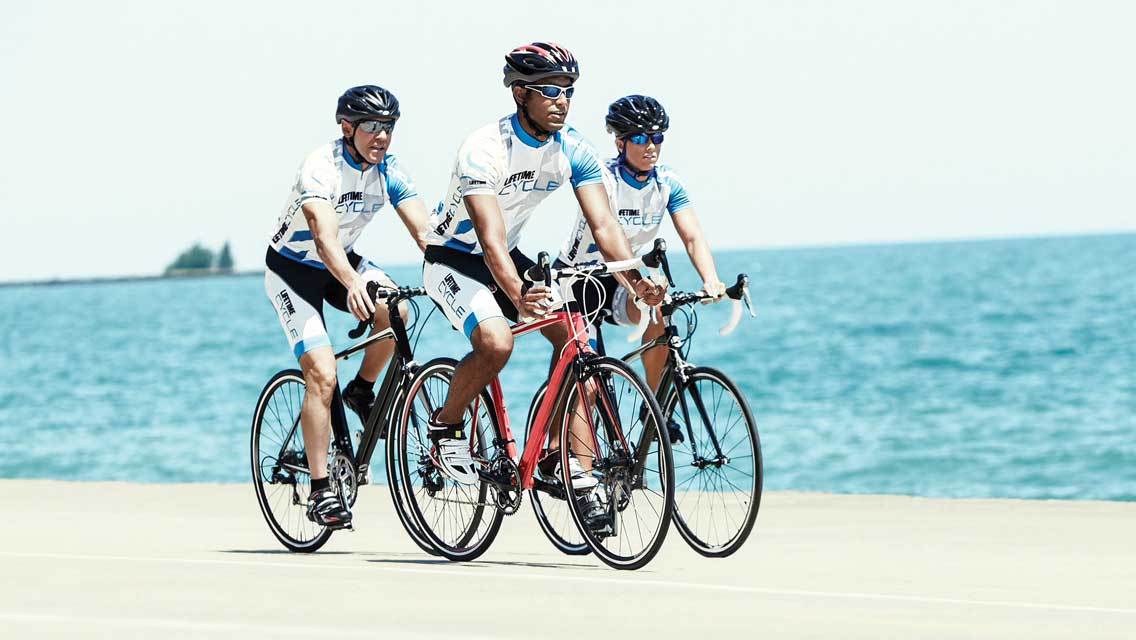
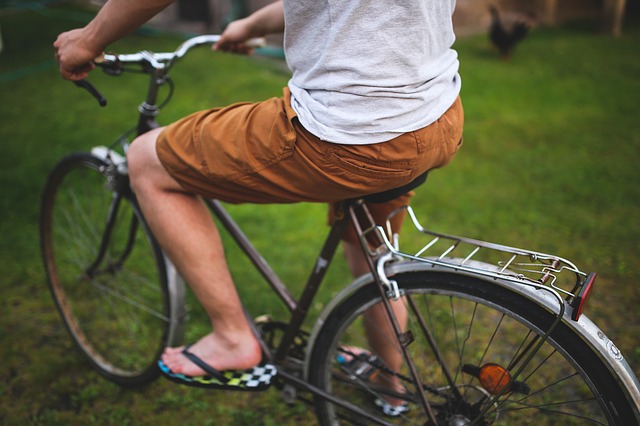
This Post Has 0 Comments